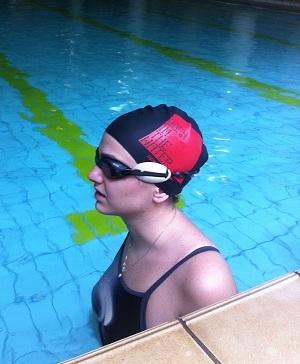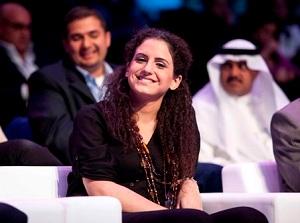Special Issue: Water Narratives
24 December 2025
Published online 1 August 2012

In a globalized market where competition is stiff inventing and developing a new product is not easy. The events of the Arab Spring have galvanized several young Arab entrepreneurs to try to bring innovative products to the market.
Businesswoman Hind Hobeika, a 24-year-old scientist who studied at the American University of Beirut (AUB) and won third place in Qatar's Stars of Science competition last year, is one such budding entrepreneur. Her swimming goggles - catchily named Butterfleye - developed during the competition, recently won first place at the MIT Pan Arab Business Plan.
With her product soon to hit the market, Nature Middle East talked to Hobeika about her invention and the challenges of taking a concept prototype to the market.
I was part of the AUB swimming team, and our coach used to tailor the entire training based on percentages of our maximum heart rate. I always found it very surprising how we had no tool to actually measure the heart rate. We manually counted our pulse after each race, a method that is ineffective and unreliable.
Butterfleye is the first heart rate monitor specifically adapted for swimmers. Its design is the first that is compatible with the biomechanics of swimming. Devices currently on the market require swimmers to either read the heart rate from a watch, thus disrupt their arm motion, or to hear it in the noisy pool environment, which makes it inaudible. The heart rate is also measured with an external chest belt, finger clip or ear clip. This adds drag in the water.
The sensor on Butterfleye is integrated in the device, and the heart rate is displayed on the lens so that swimmers don't have to disrupt their motion to read it.
There may be many explanations for why a similar device has not been created yet, but I think that the product is niche, and big companies are interested in products that have a wider appeal.
The technology can be adapted to the usage of elderly people or people with cardiac conditions.
The device is separate from the goggles. It is an independent module that can be mounted on the straps of any type of swimming goggles.
The concept we use for the heart rate measurement is the same as the one used for pulse oximetry: when the heart pumps blood, the volume of the arteries gets bigger. When projecting a light sensor on the temporal artery, the reflected light will vary depending on the volume of the artery. We can thus know how fast the heart is pumping blood. This variation in light gives the standard heart rate peak curve. We then count the number of peaks and calculate the time between them to get the instantaneous heart rate.
The sensor is connected to a battery-powered printed circuit board (PCB) that processes the signal, removes the noise and calculates the heart rate. The swimmer will see color coded lights on his lenses that are reflected indirectly: green if they are on target, red if they should slow down and yellow if they should go faster.
The prototype I built during the competition was indeed very bulky. It was designed, manufactured and assembled in just five weeks, and was meant to be for a proof-of-concept.
After I won the third place in the competition, I worked on filing a US patent based on the Lebanese and GCC patents I had. I spent a year looking for investors, and in September 2011 I signed a deal with Berytech Fund [a Lebanese start up fund] and legally established a company. I then hired an electronics engineer, an industrial designer and a product researcher to work on improving the prototype and take it to market level. I also recently won first place at the MIT Pan Arab Business Plan competition in June 2012.
Since then, we have reduced the size by 70% and the weight by 50%. We have had lots of limitations along the way that made it very hard to improve the design such as the waterproofing, the color display, the USB connector, etc. but our design team is made of superstars who were able to overcome all of the challenges.

It can be used in various applications, such as the medical field. Heart rate is not only a crucial parameter in physical activity, but is a critical parameter to monitor for people with special conditions. The device we are developing today has the spirit and features of a sports accessory, but the technology can be adapted to the usage of elderly people or people with cardiac conditions. This way, they would be able to wear a monitor 24/7 without having to be hooked up to enormous machines.
My startup is one of very few in the Arab world that deals with hardware development. There are very few knowledgeable people in the field, and very scarce resources. I had a very hard time finding the right people to work with. Also, since not all of the tools and technologies I work with are available in the region, I need to ship them from the US, a process that is very time consuming and expensive.
To overcome this challenge and make it easier for future hardware startups, I have set up a blog where I list all of the resources I know related to hardware development both in Beirut and abroad.
We are launching a first small run of Butterfleye in December 2012, and plan to have a product on the market by the second quarter of 2013.
We are also planning on launching a series of sports products during the next three years while expanding our technology to other sectors to reach a larger market.
In 15 years, I see the product being an indispensable tool in all training. It will be a complete platform for athletes, coaches, doctors and physical trainers. I hope to see it expanding to other disciplines as well.
doi:10.1038/nmiddleeast.2012.107
Stay connected: